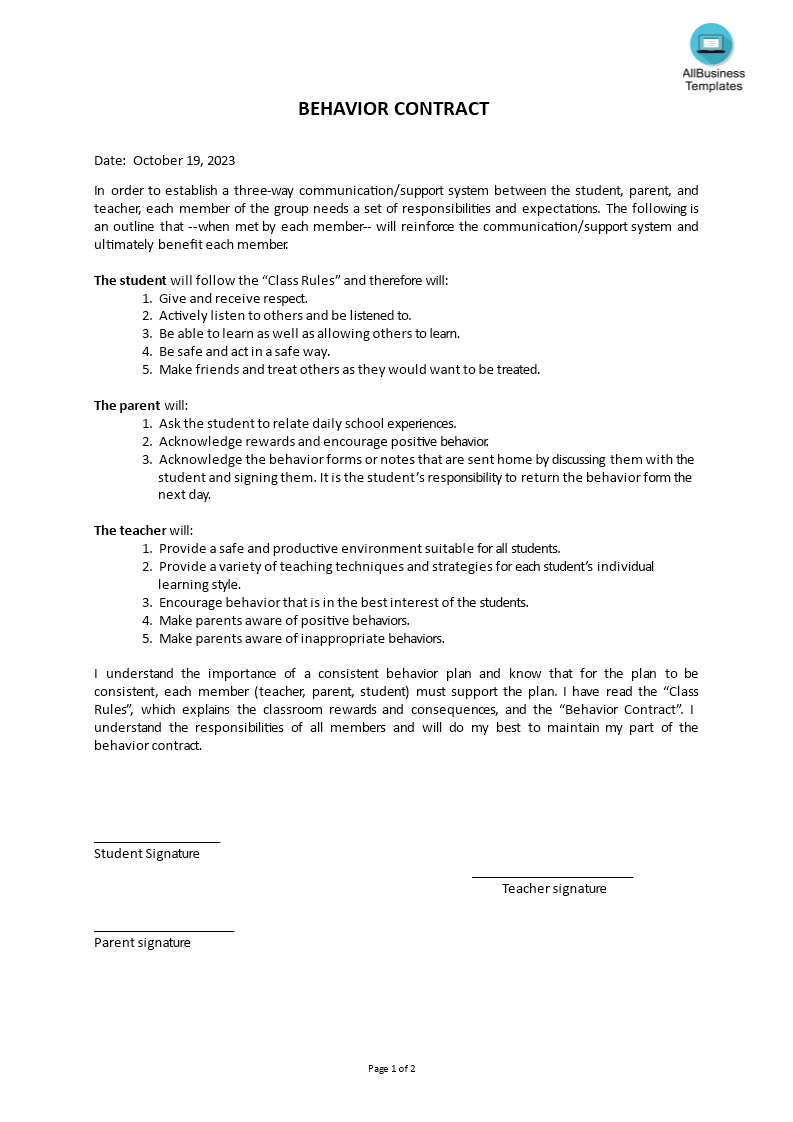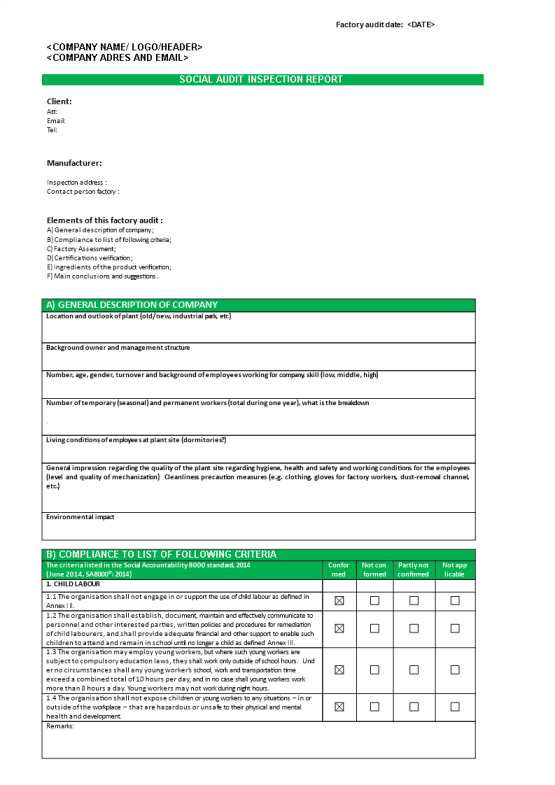Behavioral contract
Sponsored Link免费模板 保存,填空,打印,三步搞定!

Download Behavioral contract
微软的词 (.docx)免费文件转换
其他可用语言:
- 本文档已通过专业认证
- 100%可定制
- 这是一个数字下载 (65.63 kB)
- 语: English
Sponsored Link
How to write a behavior contract for a student who has shown poor behavior? Why do behavior-based contracts exist? Our sample template is a great way to help employees stay on track and reach their goals, which also helps to create a culture of accountability and responsibility. Download this sample template now to create a document that is tailored to the specific needs of your organization.
A behavioral contract, also known as a behavior contract, is a formal written agreement between two parties, often used in educational, clinical, or therapeutic settings, to define and clarify desired behaviors, goals, and consequences for certain behaviors. Behavioral contracts are typically used to encourage and reinforce positive behaviors or to modify and reduce undesirable or problematic behaviors. These contracts are commonly employed in educational settings, mental health treatment, and counseling, as well as within families and various institutions.
Key components of a behavioral contract typically include:
- Identifying Parties: The contract specifies who is involved, typically the individual (e.g., a student or patient) and the person responsible for overseeing the contract (e.g., a teacher, counselor, or therapist).
- Behavioral Goals: The desired behaviors or goals are clearly defined in specific, observable, and measurable terms. For example, a goal could be "attend all classes" or "reduce aggressive outbursts."
- Expectations and Responsibilities: The contract outlines the responsibilities and expectations of both parties. This may include the actions the individual is expected to take to achieve the stated goals and the responsibilities of the overseeing party.
- Rewards and Reinforcements: Positive consequences or rewards for meeting the behavioral goals are outlined. Rewards could include privileges, recognition, or other incentives that motivate the individual to work towards the desired behaviors.
- Consequences: The contract specifies the consequences or penalties for not meeting the agreed-upon behavioral goals. Consequences should be reasonable, fair, and appropriate to the situation.
- Timeframe: A clear timeframe is established, indicating when the contract begins, how long it will last, and when it will be reviewed or renewed.
- Monitoring and Reporting: The process for monitoring progress and reporting on the individual's behavior is outlined. This may involve daily or weekly check-ins, documenting behaviors, and sharing this information with the overseeing party.
- Signature and Agreement: Both parties sign the contract to signify their understanding and commitment to the terms and conditions.
- Review and Evaluation: The contract will typically include provisions for regular review and evaluation of the individual's progress toward the behavioral goals. This allows for adjustments and modifications as needed.
Behavioral contracts are commonly used in educational settings for students with behavioral challenges, in mental health treatment to address issues like addiction or self-harm, and in family settings to establish and reinforce household rules and expectations.
Download this Behavior Contract model directly.
DISCLAIMER
Nothing on this site shall be considered legal advice and no attorney-client relationship is established.
发表评论。 如果您有任何问题或意见,请随时在下面发布
Sponsored Link


